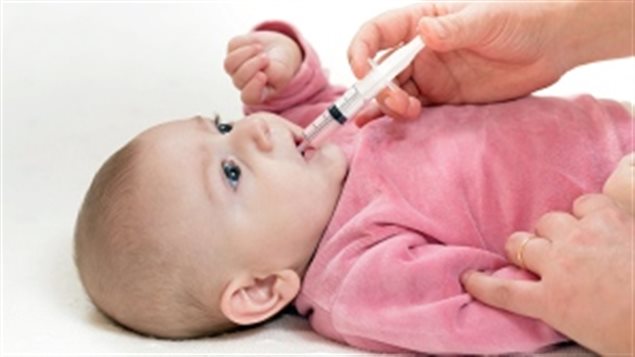Parents should use precise measuring devices to avoid giving children the wrong amounts of medication, say experts in Canada and the United States. And those devices should use metric measurements as should doctors and pharmacists.
Canada phased out the British imperial measuring system in the 1970s, but some people still prefer to use teaspoons rather than millilitres when giving children their medicine. “Probably one of the biggest problems is that people use their household teaspoons to measure medicine,” says pharmacist Julie Greenall, a director at the Institute for Safe Medication Practices Canada.
Don’t use any old teaspoon
“People don’t realize that measuring medicine really requires precision… They think they can take a teaspoon out of a drawer and just use that. But the amount of volume in that teaspoon can vary widely.”
Instead, parents should be using syringes designed especially for giving children medication in liquid form, and they should use the millilitre measure, says Greenall.
ListenParent confused millilitres and teaspoons
“One of the problems we have is that a lot of the measuring devices that are sold—oral syringes—are marked both in millilitres and teaspoons. We had a case that we had issued an alert on where a parent didn’t understand that two teaspoons and two millilitres weren’t the same thing.
“In this case the parent was supposed to give the child two millilitres of an antibiotic and instead gave two teaspoons which was five times the correct amount. The child experienced a fairly severe stomach upset for several days which did resolve and there was no long term harm. But if it had been a different kind of medicine the outcome could have been quite different,” says Greenall.
The U.S. still uses the imperial system of measurement, but now the American Academy of Pediatrics is calling for a simple, universal standard of metric doses that would change how doctors write prescriptions, how pharmacists dispense them as well as how manufacturers label their products.
Safety tips help parents
Canadian experts support the plan and would like to see pediatricians adopt the same position. Meanwhile, the Institute for Safe Medication Practices Canada has tips for parents:
-Ask the doctor why the medicine has been prescribed and what the correct dosage is, and how often to take it.
-Ensure the pharmacist knows the child’s correct age and weight so he or she can make sure the dose is correct.
Aask for an oral syringe for correct measurement of the dose and ask the pharmacist to show you how much liquid will provide the correct dose.
-Ask the doctor and pharmacists about possible side effects.
‘It seems pretty basic, but…”
“It seems pretty basic,” says Greenall, “but if we can all just make sure that we know what dose to give and that we’re measuring it accurately, then we’re going a long way to keeping children safer.”







For reasons beyond our control, and for an undetermined period of time, our comment section is now closed. However, our social networks remain open to your contributions.